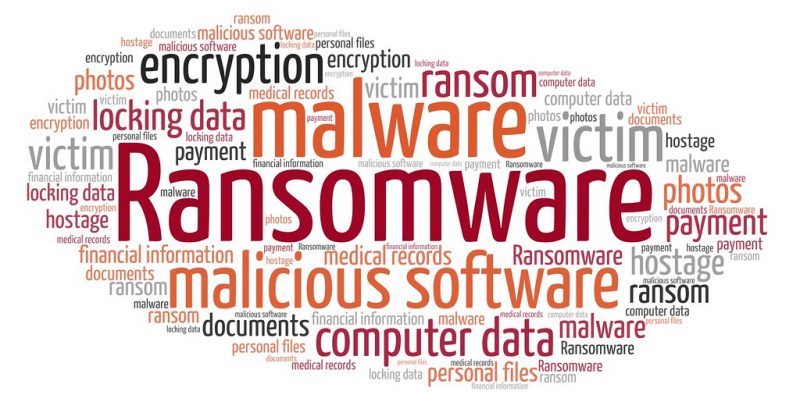Ransomware Attacks Are Evolving. Your Security Strategy Should, Too

Modern ransomware attacks typically include various tactics like social
engineering, email phishing, malicious email links and exploiting
vulnerabilities in unpatched software to infiltrate environments and deploy
malware. What that means is that there are no days off from maintaining good
cyber-hygiene. But there’s another challenge: As an organization’s defense
strategies against common threats and attack methods improve, bad actors will
adjust their approach to find new points of vulnerability. Thus, threat
detection and response require real-time monitoring of various channels and
networks, which can feel like a never-ending game of whack-a-mole. So how can
organizations ensure they stay one step ahead, if they don’t know where the next
attack will target? The only practical approach is for organizations to
implement a layered security strategy that includes a balance between
prevention, threat detection and remediation – starting with a zero-trust
security strategy. Initiating zero-trust security requires both an operational
framework and a set of key technologies designed for modern enterprises to
better secure digital assets.
Stateful Applications in Kubernetes: It Pays to Plan Ahead

Maybe you want to go with a pure cloud solution, like Google Kubernetes Engine
(GKE), Amazon Elastic Kubernetes Service (EKS) or Azure Kubernetes Service
(AKS). Or perhaps you want to use your on-premises data center for solutions
like RedHat’s OpenShift or Rancher. You’ll need to evaluate all the different
components required to get your cluster up and running. For instance, you’ll
likely have a preferred container network interface (CNI) plugin that meets your
project’s requirements and drives your cluster’s networking. Once your clusters
are operational and you’ve completed the development phase, you’ll begin testing
your application. But now, your platform team is struggling to maintain your
stateful application’s availability and reliability. As part of your stateful
application, you’ve been using a database like Cassandra, MongoDB or MySQL.
Every time a container is restarted, you begin to see errors in your database.
You can prevent these errors with some manual intervention, but then you’re
missing out on the native automation capabilities of Kubernetes.
Understanding Kubernetes Compliance and Security Frameworks

Compliance has become crucial for ensuring business continuity, preventing
reputational damage and establishing the risk level for each application.
Compliance frameworks aim to address security and privacy concerns through
easy monitoring of controls, team-level accountability and vulnerability
assessment—all of which present unique challenges in a K8s environment. To
fully secure Kubernetes, a multi-pronged approach is needed: Clean code, full
observability, preventing the exchange of information with untrusted services
and digital signatures. One must also consider network, supply chain and CI/CD
pipeline security, resource protection, architecture best practices, secrets
management and protection, vulnerability scanning and container runtime
protection. A compliance framework can help you systematically manage all this
complexity. ... The Threat Matrix for Kubernetes, developed from the widely
recognized MITRE ATT@CK (Adversarial Tactics, Techniques & Common
Knowledge) Matrix, takes a different approach based on today’s leading
cyberthreats and hacking techniques.
Authentication in Serverless Apps—What Are the Options?

In serverless applications, there are many components interacting—not only end
users and applications but also cloud vendors and applications. This is why
common authentication methods, such as single factor, two-factor and
multifactor authentication offer only a bare minimum foundation. Serverless
authentication requires a zero-trust mentality—no connection should be
trusted, even communication between internal components of an application
should be authenticated and validated. To properly secure serverless
authentication, you also need to use authentication and authorization
protocols, configure secure intraservice permissions and monitor and control
incoming and outgoing access. ... A network is made accessible through a SaaS
offering to external users. Access will be restricted, and every user will
require the official credentials to achieve that access. However, this brings
up the same problems raised above—the secrets must be stored somewhere. You
cannot manage how your users access and store the credentials that you provide
them with; therefore, you should assume that their credentials are not being
kept securely and that they may be compromised at any point.
The economics behind adopting blockchain

If we take the insurance sector as a use case, we can see how blockchain
mitigates various issues around information asymmetries. One fundamental
concern in the insurance sector is the principal-agent problem, which stems
from conflicting incentives amidst information asymmetry between the principal
(insurer company) and the agent (of the company). Some adverse outcomes of
this include unprofessional conduct, agents forging documents to meet assigned
targets as well as a misrepresentation of the compliances, often leading to
misselling of insurance products. These problems occur primarily due to the
absence of an integrated mechanism to track and prevent fraudulent conduct of
the agent. In such a scenario, blockchain has the ability to bridge the gaps
and enhance the customer experience by virtue of providing a distributive,
immutable and transparent rating system that allows agents to be rated
according to their performance by companies as well as clients.
Techstinction - How Technology Use is Having a Severe Impact on our Climate
Like most large organisations, there is a general consciousness of the impact the Financial Services Industry is having on the environment. All three of these banks are taking serious measures to reduce their CO2 emissions and to change the behaviours of their staff. The Natwest group (who own RBS) for example recently published a working from home guide to their employees containing tips on how to save energy. Whilst this and all sustainability measures should be applauded, it’s important to acknowledge that "Sustainability in our work place" is very different and less important than "sustainability in our work", simply because there is more to be gained by optimising what we are doing as opposed to where we do it, both financially and for the environment. Sustainability in our work involves being lean in everything we do, including the hardware infrastructure being used, being completely digital in the services provided as well as how we produce software to deliver these services. All the major cloud providers invest heavily in providing energy efficient infrastructure as well using renewable energy sources.How machine learning speeds up Power BI reports

Creating aggregations you don't end up using is a waste of time and money.
"Creating thousands, tens of thousands, hundreds of thousands of aggregations
will take hours to process, use huge amounts of CPU time that you're paying
for as part of your licence and be very uneconomic to maintain," Netz warned.
To help with that, Microsoft turned to some rather vintage database technology
dating back to when SQL Server Analysis Service relied on multidimensional
cubes, before the switch to in-memory columnar stores. Netz originally joined
Microsoft when it acquired his company for its clever techniques around
creating collections of data aggregations. "The whole multidimensional world
was based on aggregates of data," he said. "We had this very smart way to
accelerate queries by creating a collection of aggregates. If you know what
the user queries are, [you can] find the best collection of aggregates that
will be efficient, so that you don't need to create surplus aggregates that
nobody's going to use or that are not needed because some other aggregates can
answer [the query].
How GitOps Benefits from Security-as-Code
The emergence of security-as-code signifies how the days of security teams
holding deployments up are waning. “Now we have security and app dev who are
now in this kind of weird struggle — or I think historically had been — but
bringing those two teams together and allowing flexibility, but not getting in
the way of development is really to me where the GitOps and DevSecOps emerge.
That’s kind of the big key for me,” Blake said. ... Developers today are
deploying applications in an often highly distributed microservices
environment. Security-as-code serves to both automate security for CI/CD with
GitOps while also ensuring security processes are taking interconnectivity
into account. “It’s sort of a realization that everything is so interconnected
— and you can have security problems that can cause operational problems. If
you think about code quality, one of your metrics for ‘this is good code’
doesn’t cause a security vulnerability,” Omier said. “So, I think a lot of
these terms really come from acknowledging that you can’t look at individual
pieces, when you’re thinking about how we are doing? ..."
The role of Artificial Intelligence in manufacturing

There are few key advantages which make the adoption of AI particularly
suitable as launching pads for manufacturers to embark on their cognitive
computing journey – intelligent maintenance, intelligent demand planning and
forecasting, and product quality control. The deployment of AI is a complex
process, as with many facets of digitisation, but it has not stopped companies
from moving forward. The ability to grow and sustain the AI initiative over
time, in a manner that generates increasing value for the enterprise, is
likely to be crucial to achieving early success milestones on an AI adoption
journey. Manufacturing companies are adopting AI and ML with such speed
because by using these cognitive computing technologies, organisations can
optimise their analytics capabilities, make better forecasts and decrease
inventory costs. Improved analytics capabilities enable companies to switch to
predictive maintenance, reducing maintenance costs and reducing downtime. The
use of AI allows manufacturers to predict when or if functional equipment will
fail so that maintenance and repairs can be scheduled in advance.
What the metaverse means for brand experiences

The metaverse is best described as a 3D World Wide Web or a digital facsimile
of the physical world. In this realm, users can move about, converse with
other users, make purchases, hold meetings, and engage in all manner of other
activities. In the metaverse, all seats at live performances are front and
center, sporting events are right behind home plate or center court, and of
course, all avatars remain young and beautiful — if that’s what you desire —
forever. As you might imagine, this is a marketer’s dream. Anheuser-Busch
InBev global head of technology and innovation Lindsey McInerney explained to
Built In recently that marketing is all about getting to where the people are,
and a fully immersive environment is ripe with all manner of possibilities,
from targeted marketing and advertising opportunities to fully virtualized
brand experiences. Already, companies like ABB are experimenting with
metaverse-type marketing opportunities, such as virtual horse racing featuring
branded NFTs.
Quote for the day:
"Making those around you feel
invisible is the opposite of leadership." -- Margaret Heffernan
No comments:
Post a Comment